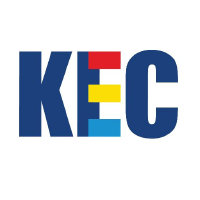
KEC International Ltd
NSE:KEC


| US |

|
Johnson & Johnson
NYSE:JNJ
|
Pharmaceuticals
|
| US |

|
Berkshire Hathaway Inc
NYSE:BRK.A
|
Financial Services
|
| US |

|
Bank of America Corp
NYSE:BAC
|
Banking
|
| US |

|
Mastercard Inc
NYSE:MA
|
Technology
|
| US |

|
UnitedHealth Group Inc
NYSE:UNH
|
Health Care
|
| US |

|
Exxon Mobil Corp
NYSE:XOM
|
Energy
|
| US |

|
Pfizer Inc
NYSE:PFE
|
Pharmaceuticals
|
| US |

|
Palantir Technologies Inc
NYSE:PLTR
|
Technology
|
| US |

|
Nike Inc
NYSE:NKE
|
Textiles, Apparel & Luxury Goods
|
| US |

|
Visa Inc
NYSE:V
|
Technology
|
| CN |

|
Alibaba Group Holding Ltd
NYSE:BABA
|
Retail
|
| US |

|
3M Co
NYSE:MMM
|
Industrial Conglomerates
|
| US |

|
JPMorgan Chase & Co
NYSE:JPM
|
Banking
|
| US |

|
Coca-Cola Co
NYSE:KO
|
Beverages
|
| US |

|
Walmart Inc
NYSE:WMT
|
Retail
|
| US |

|
Verizon Communications Inc
NYSE:VZ
|
Telecommunication
|
Utilize notes to systematically review your investment decisions. By reflecting on past outcomes, you can discern effective strategies and identify those that underperformed. This continuous feedback loop enables you to adapt and refine your approach, optimizing for future success.
Each note serves as a learning point, offering insights into your decision-making processes. Over time, you'll accumulate a personalized database of knowledge, enhancing your ability to make informed decisions quickly and effectively.
With a comprehensive record of your investment history at your fingertips, you can compare current opportunities against past experiences. This not only bolsters your confidence but also ensures that each decision is grounded in a well-documented rationale.
Do you really want to delete this note?
This action cannot be undone.

| 52 Week Range |
589.2
1 240.4
|
| Price Target |
|
We'll email you a reminder when the closing price reaches INR.
Choose the stock you wish to monitor with a price alert.

|
Johnson & Johnson
NYSE:JNJ
|
US |

|
Berkshire Hathaway Inc
NYSE:BRK.A
|
US |

|
Bank of America Corp
NYSE:BAC
|
US |

|
Mastercard Inc
NYSE:MA
|
US |

|
UnitedHealth Group Inc
NYSE:UNH
|
US |

|
Exxon Mobil Corp
NYSE:XOM
|
US |

|
Pfizer Inc
NYSE:PFE
|
US |

|
Palantir Technologies Inc
NYSE:PLTR
|
US |

|
Nike Inc
NYSE:NKE
|
US |

|
Visa Inc
NYSE:V
|
US |

|
Alibaba Group Holding Ltd
NYSE:BABA
|
CN |

|
3M Co
NYSE:MMM
|
US |

|
JPMorgan Chase & Co
NYSE:JPM
|
US |

|
Coca-Cola Co
NYSE:KO
|
US |

|
Walmart Inc
NYSE:WMT
|
US |

|
Verizon Communications Inc
NYSE:VZ
|
US |
This alert will be permanently deleted.
 KEC International Ltd
KEC International Ltd
KEC International Ltd
Investor Relations
KEC International Ltd., a vital arm of the RPG Group, is a prominent player in the global infrastructure engineering, procurement, and construction landscape. With roots tracing back to 1945, the company has firmly established itself in sectors like power transmission and distribution, railways, civil, smart infrastructure, and solar. KEC's prowess is rooted in its ability to design, manufacture, and install critical infrastructure components that power economies and connect regions. The company capitalizes on its vast network spread across 100 countries, leveraging its engineering acumen and a vast fleet of machinery. This expansive geographic and operational reach ensures that KEC remains a pivotal contributor to ambitious projects, transforming remote stretches into bustling corridors of commerce and connectivity.
Revenue streams are meticulously woven together through strategic contracts and partnerships spanning continents. In the intricate dance of infrastructure development, KEC International cuts through competitive markets by offering solutions from concept to commissioning. This integrated approach, combined with robust project management skills, ensures that every tower raised and every rail laid aligns with the growing aspirations of developing and developed nations alike. Moreover, by consistently expanding its capabilities, such as foraying into newer sectors like smart infrastructure, KEC continues to bolster its financial standing while remaining at the forefront of innovation. The company’s focus on efficiency, from tendering to delivery, underscores its ability to turn ambitious visions into concrete realities, thereby driving its financial success and reinforcing its position in the infrastructure sector.

KEC International Ltd., a vital arm of the RPG Group, is a prominent player in the global infrastructure engineering, procurement, and construction landscape. With roots tracing back to 1945, the company has firmly established itself in sectors like power transmission and distribution, railways, civil, smart infrastructure, and solar. KEC's prowess is rooted in its ability to design, manufacture, and install critical infrastructure components that power economies and connect regions. The company capitalizes on its vast network spread across 100 countries, leveraging its engineering acumen and a vast fleet of machinery. This expansive geographic and operational reach ensures that KEC remains a pivotal contributor to ambitious projects, transforming remote stretches into bustling corridors of commerce and connectivity.
Revenue streams are meticulously woven together through strategic contracts and partnerships spanning continents. In the intricate dance of infrastructure development, KEC International cuts through competitive markets by offering solutions from concept to commissioning. This integrated approach, combined with robust project management skills, ensures that every tower raised and every rail laid aligns with the growing aspirations of developing and developed nations alike. Moreover, by consistently expanding its capabilities, such as foraying into newer sectors like smart infrastructure, KEC continues to bolster its financial standing while remaining at the forefront of innovation. The company’s focus on efficiency, from tendering to delivery, underscores its ability to turn ambitious visions into concrete realities, thereby driving its financial success and reinforcing its position in the infrastructure sector.





























 You don't have any saved screeners yet
You don't have any saved screeners yet
